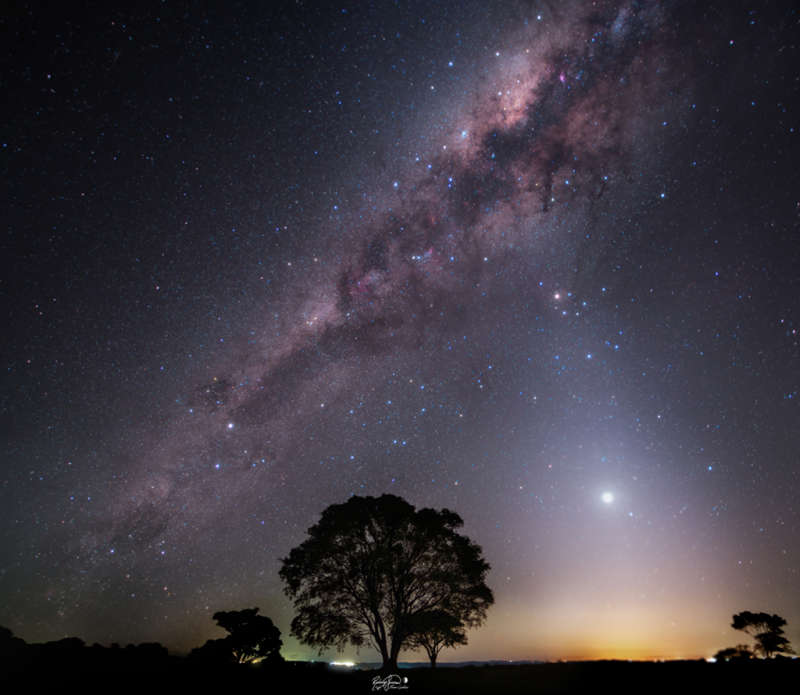Credit & Copyright: Rodrigo Guerra
Explanation:
Posing as a brilliant evening star,
Venus lies near the western horizon
in this southern hemisphere, early spring, night skyscape.
To create the composite view exposures tracking the sky
and fixed for the foreground were taken on
September 25 from Cascavel in southern Brazil.
In view after sunset, Venus appears immersed in a cone of zodiacal light,
sunlight scattered from dust along the
Solar System's ecliptic
plane.
In fact from either hemisphere of planet Earth,
zodiacal
light is most visible
after sunset near a spring equinox,
(or before sunrise near an autumn equinox)
when its luminous arc lies at steep angles to the horizon.
Extending above the sunset on this night, the zodiacal light
reaches toward rich starfields and immense interstellar dust clouds
in the bulge of the central Milky Way.
Follow along the Milky Way from the central bulge back toward the horizon
and you'll spot the closest star system to the Sun,
Alpha Centauri, a mere 4.37 light-years away.
1999 2000 2001 2002 2003 2004 2005 2006 2007 2008 2009 2010 2011 2012 2013 2014 2015 2016 2017 2018 2019 2020 2021 2022 2023 2024 2025 |
Январь Февраль Март Апрель Май Июнь Июль Август Сентябрь Октябрь Ноябрь Декабрь |
NASA Web Site Statements, Warnings, and Disclaimers
NASA Official: Jay Norris. Specific rights apply.
A service of: LHEA at NASA / GSFC
& Michigan Tech. U.
|
Публикации с ключевыми словами:
ночное небо
Публикации со словами: ночное небо | |
См. также:
Все публикации на ту же тему >> | |
